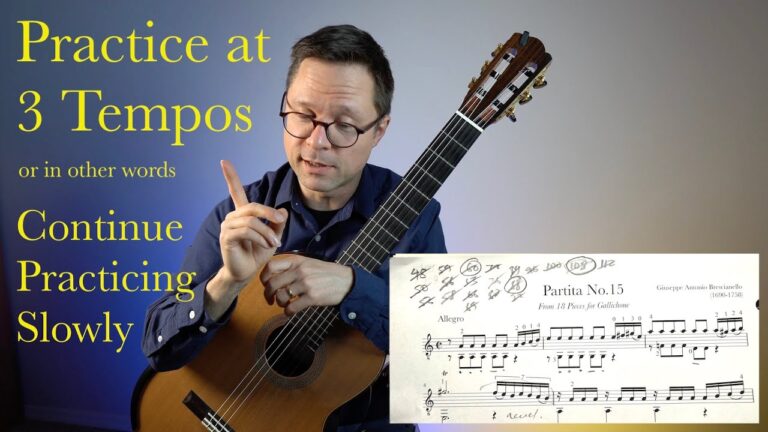Problem: Even when students practice efficiently there is still the possibility that they are not practicing well.
Here’s an example: Brad practices the most difficult sections of his music during his daily practice session (this is good). He practices the difficult part until he plays it correctly. It takes him ten tries but he plays it correctly in the end. He repeats the correct version again and moves on.
Here’s the result:
- He has played the section ten times poorly and two times correctly
- That means he has played it with mistakes 80% of the time and correctly only 20% of the time
- The poor muscle memory has an 80% advantage over the correct muscle memory
Play it slow, play it well: If you’re teacher has told you to slow down it is because they want you to increase your success ratio. You need to make sure you are playing it correctly 90% of the time if you want to have a clear and productive session. Slowing down the tempo will increase your chances of raising your success ratio.
Repeat ten times correctly: Don’t use the good old “three times a charm” cliché. When you are first tackling a problem repeat it correctly ten times more than you’ve played it incorrectly. You need to erase the incorrect muscle memory and replace it with the correct version. You won’t need to do this every day, just during the initial correction period. Once you have the correct version you will play it correctly more often and can move on to other sections.
Success equals success: This sounds obvious but nearly every student is guilty of practicing poorly. You need to practice extremely well. When you perform or just play the music you can just relax and let things happen as they will. What’s the difference? See this previous article I wrote:
The most important thing is to play correctly more than you play incorrectly.
Homework: The next time you practice ask yourself this: What percentage have I played this section correctly and incorrectly? If you are lower than 80% you are in the danger zone.
The key to staying positive in the practice room: When you exert a small amount of effort and have a large amount of success you will be enjoying the process of practicing. In other words, people enjoy succeeding and even more so when it wasn’t too hard to succeed. The catch is that you have to be realistic about how much you can accomplish. So, slow it down and increase your success ration and you will improve faster.
Resources (via Amazon.com):
Ricardo Iznaola on Practicing: A Manual for Students of Guitar Performance
The Art of Practicing: A Guide to Making Music from the Heart




